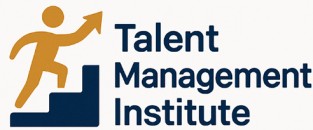
Understanding the Role of Business-to-Business Newsletters in Talent Management
The Strategic Importance of B2B Newsletters in Talent Management
In today's fast-paced business environment, the role of effective communication cannot be overstated, especially when it comes to talent management. Business-to-business (B2B) newsletters play a crucial role in facilitating this communication, offering a platform to share insights, updates, and strategies that directly impact workforce management.
B2B newsletters are a potent tool for engaging with an audience spread across different branches and departments within a company. They help in disseminating key takeaways from the latest industry trends, aligning employees and stakeholders towards a common goal. Moreover, newsletters can amplify the efforts of human resource professionals by keeping all subscribers informed and motivated.
As businesses strive to attract, develop, and retain top talent, B2B newsletters emerge as a vital asset. They provide a streamlined way to keep everyone on the same page, fostering a culture of transparency and engagement. The process of building such newsletters involves crafting engaging content that resonates with the audience, a task that requires both art and strategy.
Understanding the role of B2B newsletters in talent management is not just about sending regular updates. It's about using these newsletters as a strategic tool to nurture a productive and dynamic workforce, a theme explored further in sections concerning content creation and impact measurement.
Crafting Engaging Content for Talent Management Newsletters
Creating Compelling Content for Your Audience
In the realm of talent management, crafting engaging content for business newsletters is crucial. The goal is to provide your subscribers with valuable insights that resonate with their needs and interests. When developing content, consider what your audience wants to read and how the information can help them in their professional roles.
Start by identifying the key topics that align with your company's objectives and reflect current industry trends. Content should be informative and align with your company's core values. By doing so, you maintain alignment with your overall talent management strategy.
Engaging Through Diverse Content Types
Different content types can enhance engagement. Consider incorporating:
- Blogs that provide in-depth analyses of relevant issues.
- Interviews and expert opinions that add authority and credibility.
- Case studies that showcase real-world applications.
- Visual content such as infographics and videos to break up text and add variety.
These content types not only cater to different learning preferences but also boost the overall appeal of your newsletters.
Utilizing Email Marketing Best Practices
Email marketing principles can enhance the effectiveness of your business newsletters. It's essential to keep your audience engaged without overwhelming them. Maintaining a regular sending schedule helps cultivate a sense of anticipation and loyalty among subscribers.
An excellent practice is to personalize your email newsletters using segmentation. It allows you to tailor content to different audience segments, ensuring relevance and increasing engagement rates. Subscribers are more likely to engage with content that speaks directly to their interests and challenges.
Continuously Improving Your Content Strategy
Don't forget the importance of feedback. Encourage readers to share their thoughts and preferences, which can inform future content creation. By incorporating the 3 to 11 Rule in Customer Service, you can enhance your audience's experience by listening and adapting to their needs.
Additionally, periodically evaluating the performance of your newsletters through metrics like open rates and click-through rates helps refine your content over time. This data-driven approach ensures that your business newsletters remain a valuable tool in your talent management arsenal.
Leveraging Newsletters for Talent Acquisition and Retention
Maximizing the Potential of Newsletters for Talent Engagement
Incorporating newsletters into your talent management strategy can significantly aid in both talent acquisition and retention. A carefully crafted business newsletter serves as an effective channel to communicate your company’s values, culture, and career opportunities to prospective talent. Starting with talent acquisition, newsletters are a cost-effective means to expand your reach and engage potential candidates. By leveraging your email list, you can highlight open positions and share success stories about what makes your company an exceptional workplace. Sharing insights through newsletters about employee achievements and company milestones helps demonstrate a thriving work environment, enticing top candidates to subscribe and potentially apply. For talent retention, newsletters help maintain consistent communication with your current employees, contributing to higher engagement levels. They can be used to recognize employee achievements, celebrate company-wide initiatives, and articulate growth opportunities within the organization. Such communications foster a sense of belonging and ensure your workforce feels valued, increasing employee retention rates. Using email newsletters allows your company to stay connected with both active and passive candidates. According to Talent Management Institute (link to understanding the impact of adverse impact analysis in talent management), consistent engagement is crucial for maintaining a robust talent pipeline. Providing valuable and timely content can amplify this connection, ensuring subscribers read your email regularly.Personalization and Segmentation in B2B Newsletters
Personalization: Tailoring Content to Your Audience
In the realm of business newsletters, personalization is more than just a buzzword—it's a necessity. By tailoring content to meet the specific needs and interests of your audience, you can significantly enhance engagement and retention. This involves segmenting your email list based on various criteria such as job roles, industry, or past interactions with your company. Doing so allows you to send targeted content that resonates with each segment, making your newsletters more relevant and valuable.
Segmentation: The Key to Effective Communication
Segmentation is a powerful tool in email marketing. By dividing your subscribers into smaller groups, you can create more focused and effective communication strategies. For instance, a small business might segment its audience by industry, allowing it to send industry-specific insights and updates. This not only helps in crafting more engaging content but also increases the likelihood of your emails being read and acted upon.
Best Practices for Personalization and Segmentation
- Collect Relevant Data: To personalize effectively, start by collecting data that matters. This could include job titles, industry sectors, and previous interactions with your business.
- Use Dynamic Content: Implement dynamic content in your emails to automatically adjust the message based on the subscriber's profile or behavior.
- Test and Optimize: Regularly test different personalization strategies to see what works best for your audience. Use metrics to refine your approach over time.
- Respect Privacy: Always adhere to privacy policies and ensure that your data collection practices are transparent and ethical.
By focusing on personalization and segmentation, companies can create newsletters that not only capture attention but also build stronger relationships with their audience. This approach not only enhances talent management efforts but also aligns with broader content marketing strategies, ensuring that your business newsletter remains a top resource for your subscribers.
Measuring the Impact of Newsletters on Talent Management
Analyzing the Influence of Effective Strategies
The task of measuring the impact of newsletters on talent management is critical for businesses seeking to maximize their investment in email marketing. By tracking specific metrics, companies can gain insights into how newsletters contribute to talent acquisition and retention efforts.- Open and Click Rates: One of the best ways to evaluate the performance of your newsletter is to monitor open and click rates. High open rates suggest your subject lines are captivating, while strong click rates indicate engaging content. Utilize tools from email marketing platforms to track these metrics effectively.
- Audience Engagement: Regularly assess the engagement levels of your subscribers. Are they forwarding or sharing your email newsletters? Are they responding to content? Engagement metrics provide windows into how well your audience receives and interacts with the material.
- Conversion Tracking: If your newsletters aim to recruit talent or encourage applications, track conversion rates from your email list. Determine the number of readers who transitioned from passive readers to active applicants.
- Feedback Mechanisms: Including simple surveys or requesting feedback directly from your business newsletter audience can help refine your strategy. This input can uncover what resonates with readers and what doesn't, helping to tailor future content effectively.
- Integration with Other Channels: Measure the symbiotic relationship between newsletters and other channels such as social media. The ability of a business newsletter to drive traffic and engagement across multiple platforms adds immense value to your talent management strategy.













